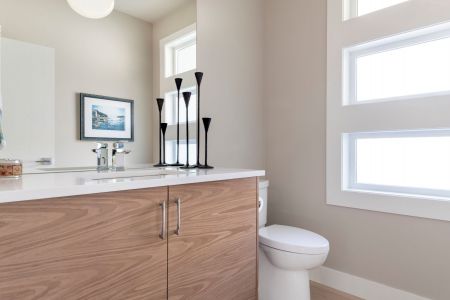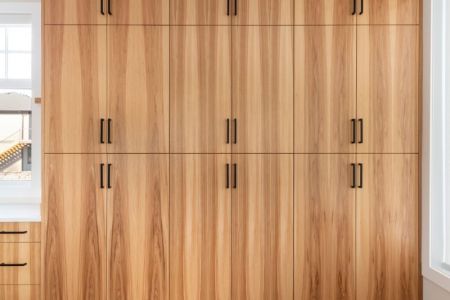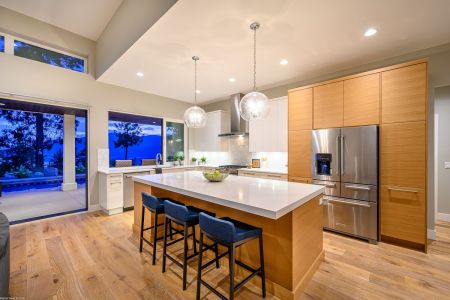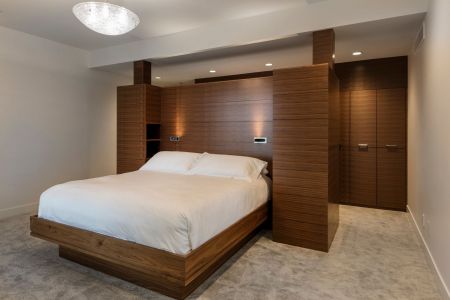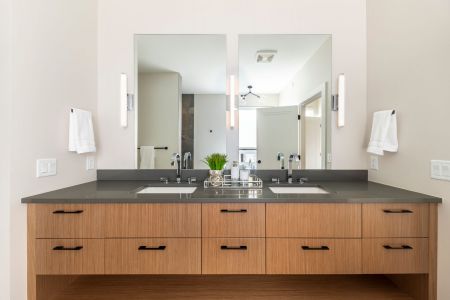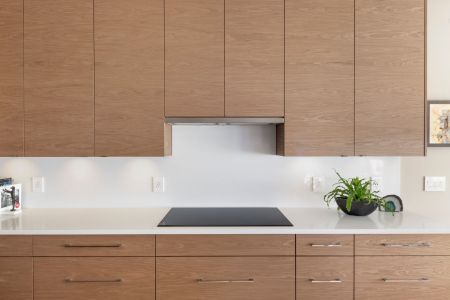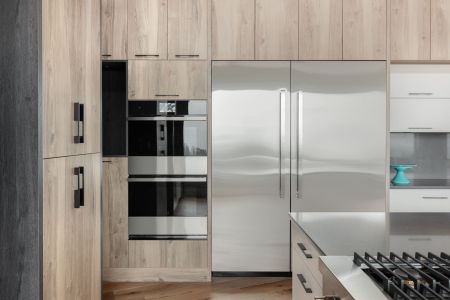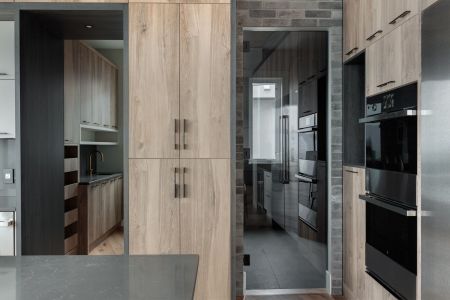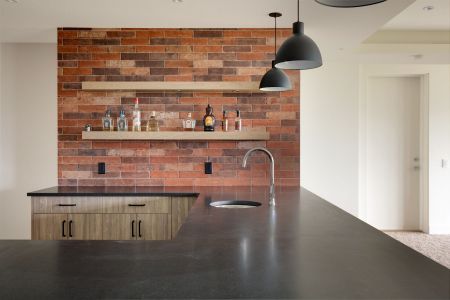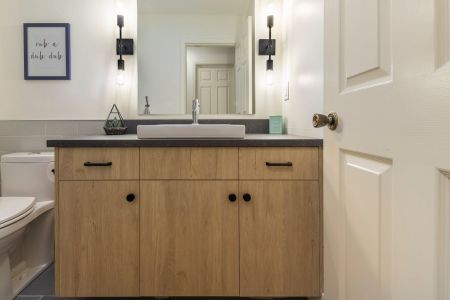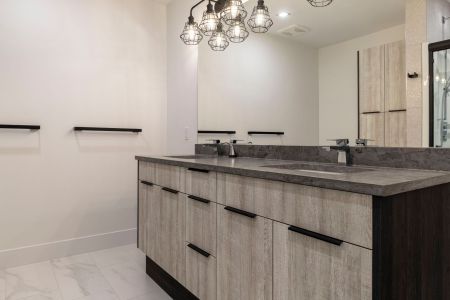Grain Match vs. Non-Grain Match
Grain matching is a system of cutting adjacent doors and/or drawers from the same piece of material, so that the grain spans from top to bottom of all the fronts for that individual cabinet (vertical grain matching) or from cabinet to adjacent cabinet (horizontal grain matching).
Grain Match
Creates a seamless and consistent pattern from door/drawer front to door/drawer front or from cabinet to cabinet (depending on the grain direction). This is especially true with a bold grain pattern in Walnut, Maple, Hickory, etc. which will beautifully enhance a design.
Provides a high-quality furniture grade product as specified in designer-class homes.
Direction of the grain can be horizontal or vertical depending on preference, and is strategically cut to create the perfect match. The effect of the match is to spread the natural characteristics of the wood across the entire sheet.
Non-Grain Match
A rising popularity with a more cost-effective option, particularly in Melamine use in modern designs.
May create colour contrasts at the joints between doors and drawers, but depending on the species, it can be difficult to tell if the grain is matched or not.
Replacing and service parts are easily ordered and supplied, and won’t disrupt the design pattern.
Natural Wood & Stain Variations
As a manufacturer, we try our best to keep wood colour and patterns similar throughout a project. It is inevitable that your wood will vary at least slightly from piece to piece. Even two woods from the same species will differ somewhat from each other, because environmental factors and the life of the tree all affect the look of the wood from geographical location, to soil, climate, insect and animal damage, knots and more.
Woods can be stained and painted, but each species have known characteristics when it comes to natural colour and grain patterns. As we mentioned earlier they still vary from piece to piece (even those from the same tree). Please keep in mind that some species, like Oak, are known for their open grain pattern, while others like Maple can vary from straight to wavy and curly all within the same piece. Some woods take stain more uniformly than others, and many can change even more as they age in your home (for instance, cherry is known to get darker as it “mellows out”).
